Year: 2018
October, 29th: an ordinary day on an extraordinary high water
Do you see these people? Do you see them well? Good.
These people are idiots.
These people were photographed on November 11st, 2012 in St. Mark’s Square, when the high water in Venice reached 140 centimeters. These people are part of the vast majority of tourists who visit Venice every year thinking that it is not a city with its problems, its inhabitants, its dramas, but an amusement park where everything is “fake”, everything is fun and everything is legitimate because – as you often hear – “I pay to stay here”.
Another consideration: these idiots are bathing in dirty water, because maybe you don’t know it, but part of the sewers in Venice drain into the canals… and I assure you that that water smells like few things in the world!
I don’t want to be controversial with this blogpost: it wants to be simply the chronicle of what happened from my point of view on October 28th, 2018, when the water in Venice reached 160 centimeters (20 centimeters higher than the picture above). And I want to somehow inform people about some aspects of the high water that they may not know or have never thought about.
I would like to try to make many people understand that maybe they don’t know, or maybe they never thought about it, that for most of the people who live and work in Venice, a high water of these proportions is a real drama.
That’s why seeing tourists having fun taking pictures like the one I published above makes me feel angry: because it’s an unconscious mockery of people who suffer serious damage, both economic and even psychological. For example: while I had the shop completely flooded and I was desperately trying to save as much as I could, there were people outside who came by and wanted to take pictures of me.
I don’t think they’re tourists, they’re just jackals.
‘Cause I assure you that seeing your own laboratory, your own shop, your own house invaded by the water is certainly not a pleasure.
I felt awful when I saw that all the measures I had taken to combat this phenomenon had failed.
But first things first.
The high water alarm had begun several days before, when the tide forecast service had announced a very sustained high water for the day 28th in the afternoon. The day before I lifted all the materials that are usually placed on the floor and those that were at a lower level.
One thing has to be taken into account: I have two bulkheads (one for the front door and one for the door to the back yard) and a pump that “spits” out the water when it reaches a certain level and that for the “normal” high waters allows me to stay relatively quiet. The problem, however, is that after a certain measure (around 115 centimeters, so almost every time there is high water!) the high water starts to rise from the floor …! However, for such high waters there are only many annoyances but not real damages.
Below is a photo-story of what happened that day.
The day before I prepared everything: I lifted everything up to protect the materials.
Ocober, 29th: the water starts to grow…
The water level exceeds the shop window and comes dangerously close to the edge of the bulkhead. The water comes from the floor.
At this point it’s really too close, the sirocco wind continues to blow and it’s a moment: the water passes the bulkhead, enters the studio and invades everything. The bulkhead is no longer needed, the pump is no longer needed: there is no longer any difference between inside and outside. Things at a lower level begin to float and go around the store.
Even the courtyard behind was flooded, submerging and ruining my beloved plants that I had unnecessarily placed above some wooden elevations
The tide usually grows for 6 hours and then decreases for the next 6 hours. This time, due to adverse weather conditions (especially the strong sirocco wind), the tide has decreased very little, so that the minimum was around 130 centimeters. And during the evening it came back high again. Luckily then, after midnight, the wind lost strength and the water began to fall, leaving behind only dirt and a very bad smell (…and think that some people take a bath in it!).
The back yard was a disaster too
It took almost three days to clean, disinfect and dry everything. A very hard job, and I realize that I am very lucky because I have not suffered serious damage. There are many shopkeepers and craftsmen with electrical machinery who have suffered irreparable damage, economic damage and now have to start again by investing money: this high water is not fun, it is a misfortune
This testimony of mine does not want to be absolutely a way to out-mourn or self-celebrate: I just want to try to make those who do not know the phenomenon of high water understand what’s really behind something that to many may seem funny, but that actually only involves damage and days of hard work.
I take this opportunity to say hello to all of you who may have learned something from this blogpost and to all the artisans of Venice who do not give up.
Arianna
PS: To take out Bic, my dog who’s always with me in the studio, to do his evening “needs” I had to take him in my arms and find a place high enough where he could walk and not swim… what a feat! And he wasn’t very happy either… 🙂
Linocutting in Venice
A linocut is a type of relief, or block print, very similar to woodblock printing. When you print a linocut, you carve an image into a linoleum (lino) block and what’s left of the block is inked and then it is printed.
I love linocutting so much, and in this blogpost I’d like to share with you the most beautiful part of the process (the last one): the actual printing.
Before printing, I have carved two lino blocks (the most difficult part of the printing process): every block will print a different color on the paper.
When the blocks are ready, I can focus on the preparation of the colors.
The color I have used for the first print was a light green that I created mixing yellow, white and permanent green, a beautiful bright green that needed to be a bit lightened.
I then slightly diluted the ink with vaseline oil, mixing it well with a metal spatula.
I will tell you a little secret: once they are ready, I always keep the colors in a small bag made of cooking paper to preserve them for a long time!
Once I have chosen the color, I have placed it on my inking plane (in plexiglas) with the help of a rubber spatula.
Passing repeatedly on the ink, vertically and horizontally, the roller inks evenly.
I then brought the ink from the roller to the plate, being careful to cover the entire block.
I have placed the sheet on a wooden board, which serves as surface of my press, and above it the inked rubber plate. A tablet equal to the lower one is placed on top of the plate, and finally a soft rubber sheet, to cushion the pressure of the press.
I inserted the “sandwich” in the press and tightened the press for a few seconds.
I remove the pressure and see the result, gently detaching the plate from the sheet.
And this is the result: the first color is done!
Now I proceed with the second color, repeating the same steps but using the second block- of course! 🙂
For the second color I needed a darker green that matched well with the first one.
I mixed the same bright green of the light block with some payne grey, a grey that tends to blue.
And this is the final result
This is the coloring technique I’ve used to print all my linocuts.
If you would like to learn more about linocut technique and you would love to try to make a linocut of your own, you can try one of my workshops: you’ll enjoy it for sure!
Venice place names: Campi, Campielli, Corti
In Venice there are no streets but calli (with a few exceptions, as we learned here), and it’s just the same for the squares: if you hear about “square”, you can’t help to refer to St. Mark’s Square, the one and only square in Venice.
All the other areas of the road network that in the rest of the world are called squares, in Venice are called Campi (Fields).
On ancient times the campi, as the term suggests, were covered with grass and used for cultivation, with orchards and fruit trees, and sheeps or horses could be found grazing there.
Only recently the campi have been paved, but there is still a testimony of what the fields should look like on the days of the Serenissima: to see it just visit the Campo di San Pietro di Castello, with its meadows and trees.
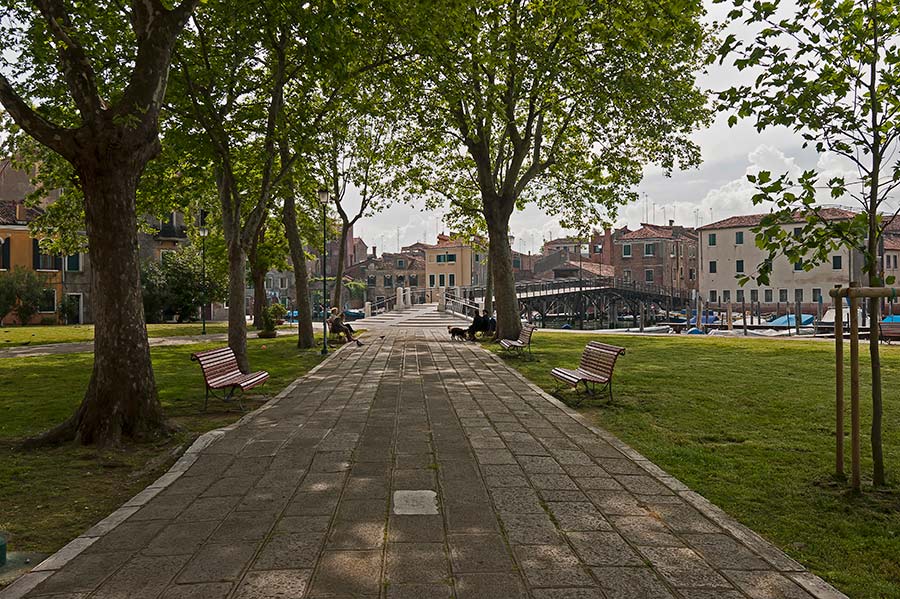
San Pietro di Castello
The social meaning of the campo has always been very strong, since Venice is a polycentric city, built on numerous islands that lived a life of their own.
The open space surrounded by houses was a meeting place for the inhabitants, a place where there was a market and overlooked the craft shops.
On the campo there was always a church, with an adjoining cemetery; the function of the campo as a burial place is still indicated in some cases with the presence of an elevated area more than a meter above normal traffic (Napoleon then banned the practice of burial in the campi, moving the cemetery to the current island of San Michele).
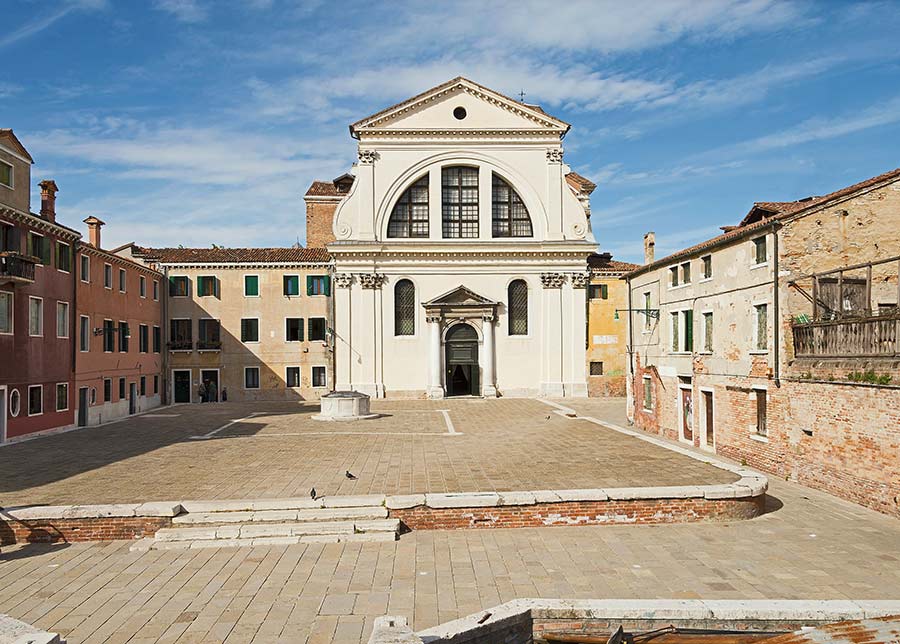
Campo San Trovato and the former cemetery
In the larger campi there were also processions and religious events, as well as tournaments and public speeches.
Even in much more recent times, the campo has been (and still is, even if the depopulation of Venice dramatically has its strong impact) the meeting place of children who played mainly football or other games, such as jumping the rope or going on skates.
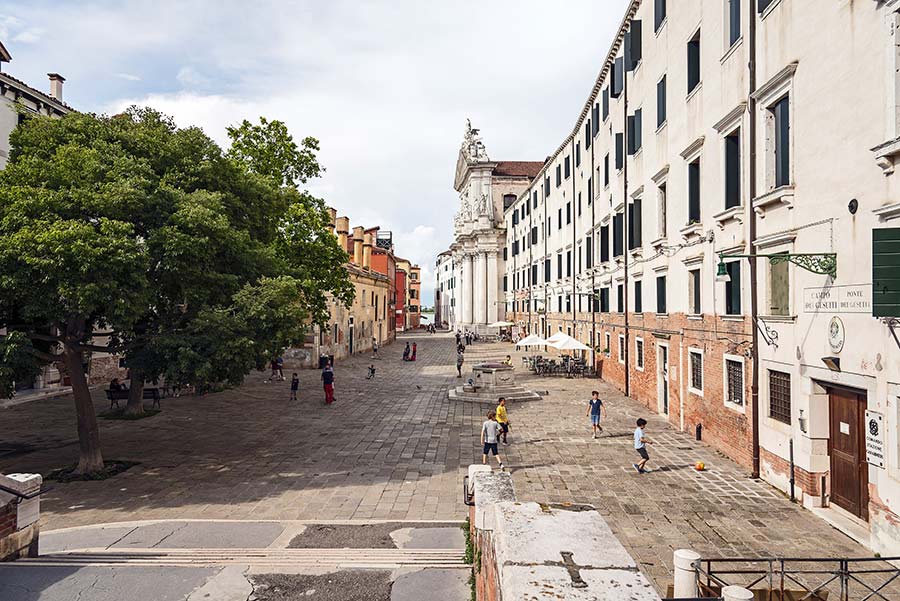
Campo dei Gesuiti with children playing football
The well was another inevitable figure in every campo, and it was the only source of water for the city, before the construction of the aqueduct.
Fortunately you can still admire many real finely worked wells, even if unused (if you want to learn more about the functioning of the wells, read this article).
The campi often owe their name to the churches that rise (or rised) there, but also to important families who lived there or to trades that were carried out in ancient times.
When the campo is smaller than usual it is referred to it as Campiello (small field), which is often only a widening of the calle or an appendix to a larger field, and it is usually devoid of well and surrounded by houses.
In the campiello social life was even more typical, because it was just the center of a micro district, where the social fabric of the city was interwoven, with gossip, quarrels and the popular chatter of a lively and crowded city. Carlo Goldoni in his comedy “Il campiello” tells just these habits.The importance of the campiello is also testified by the name given to the important literary prize “Il campiello”, one of the most prestigious and well-known Italian literary prizes.
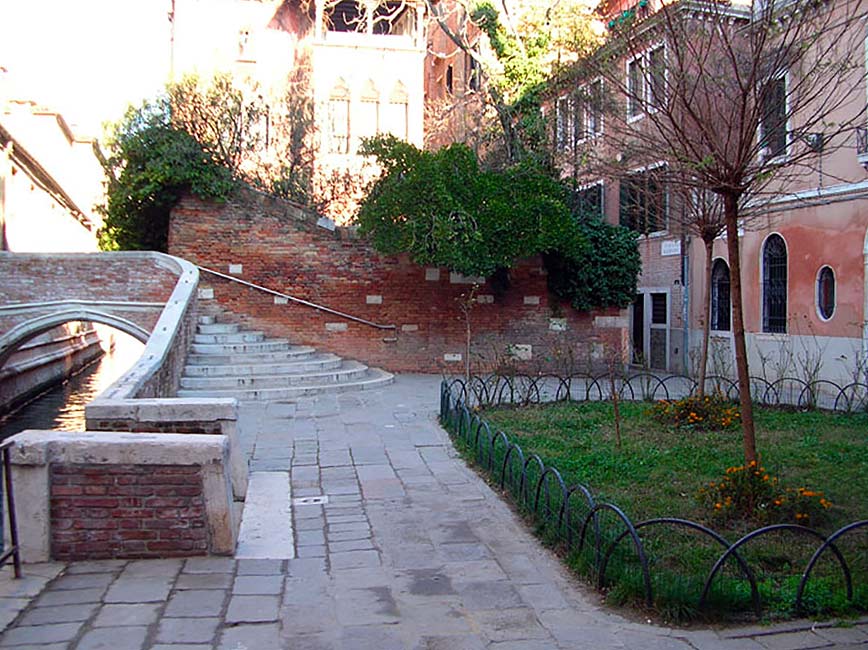
Campiello
Even smaller than the campiello is the Corte (courtyard), which usually has only one entrance through a portico or a street sometimes equipped with a gate. In fact, the corte was considered an extension of the house, where you could find women who, during the summer, sitting next to their door, engaged in housework activities such as cleaning fish and vegetables, sewing and embroidery, and the practice of inserting beads into a thread for the manufacture of necklaces, a typical activity that in dialect is called “impiraperle”.
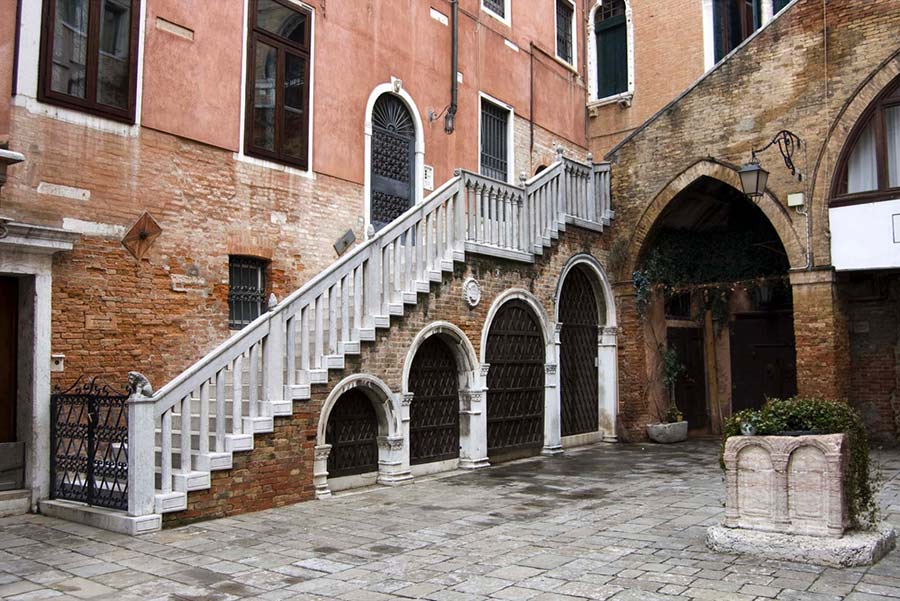
Corte
Sources
https://venicewiki.org/wiki/Campo
https://www.innvenice.com/Toponomastica-Venezia.htm
https://venipedia.it/it/campi
https://it.wikipedia.org/wiki/Campo_(Venezia)
https://it.wikipedia.org/wiki/Campiello
https://it.wikipedia.org/wiki/Corte_(Venezia)
Venice place names: Calle, Calle Larga, Salizada, Rio terà, Ramo, Sotoportego
In Venice everything is different from the rest of the world, there’s no doubt. Even the streets are not simple ways to transport people and things, but they are opportunities to see magnificent places at every step.
If you are looking for a “Strada” (Street) in Venice, you’ll find only “Strada Nova” (New Street), located in the Cannaregio district, a real city artery. Strada Nova commonly indicates the long route formed by a long series of spacious streets, from the railway station to Campo Ss. Apostoli- actually, only a part of it is the real Strada Nova.
Its construction began at the beginning of the 19th century and continued for almost the entire century, turning a long and winding road into a spacious and full of shops street.
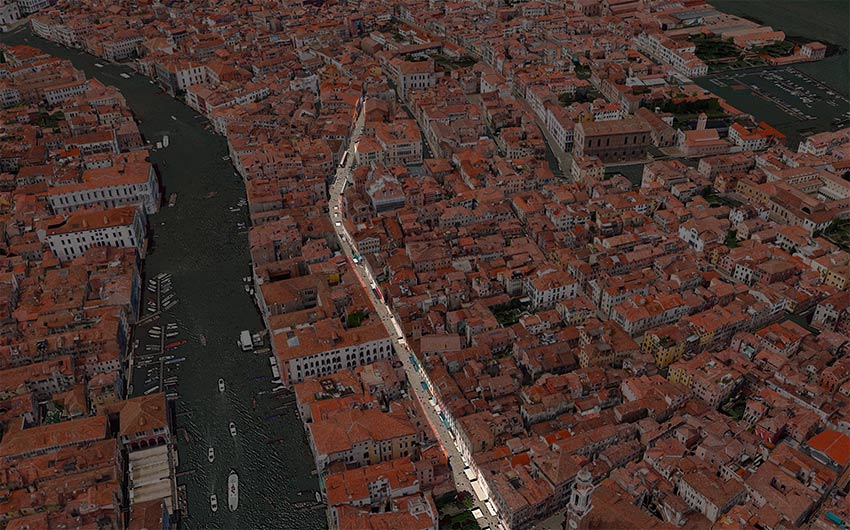
Strada Nova
The other streets in Venice are called “Calli“, from the Latin callis, which means path.
The “calli” can be very narrow or wide, the “Calli larghe” (wide streets) can be dead end streets- in this case they are called “Rami” (branches), when they lead to a dead end “campo” (field) or directly to a house.
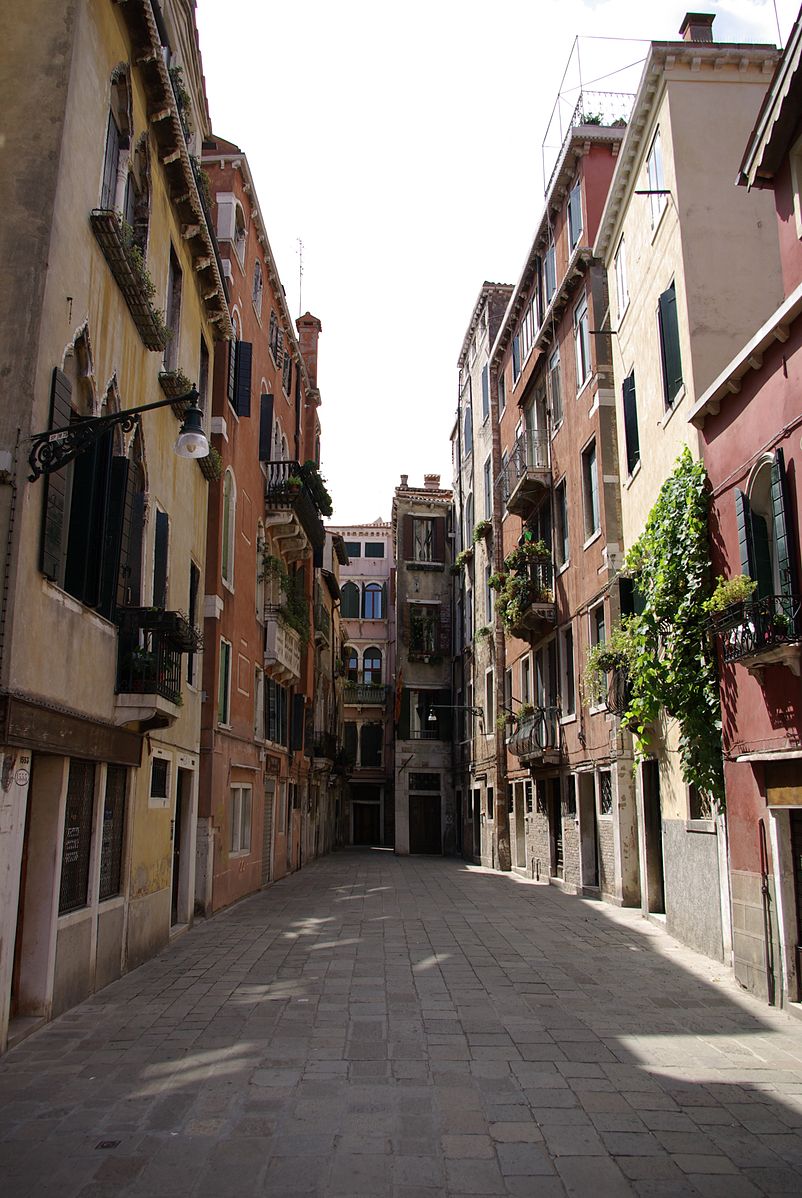
Calle
The “Salizade” are “calli” which once were more important, and that’s why they were first paved with masegni (typical stone used just in Venice), while the others were paved with terracotta bricks (or clay) placed in a herringbone pattern (as you can see even today in front of the Church of Madonna dell’Orto).
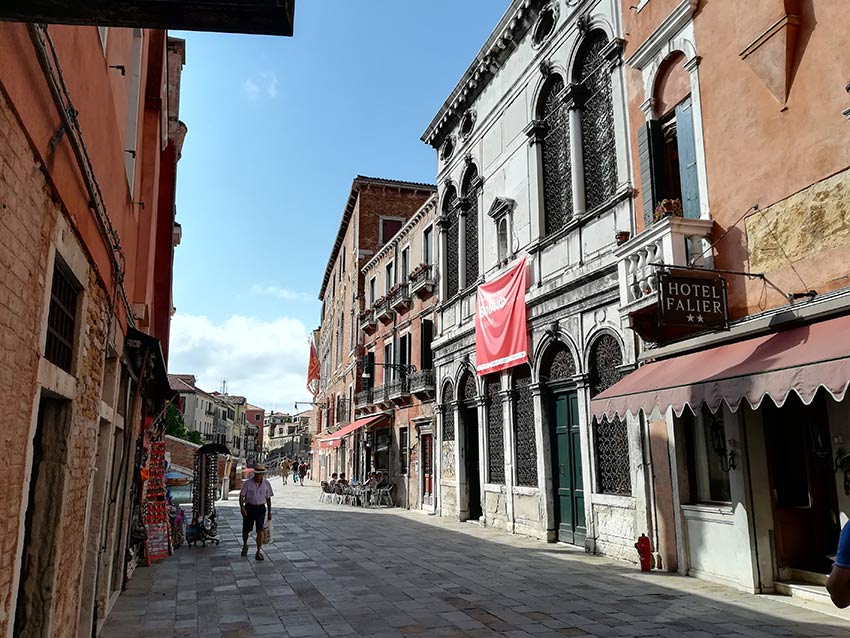
Salizada
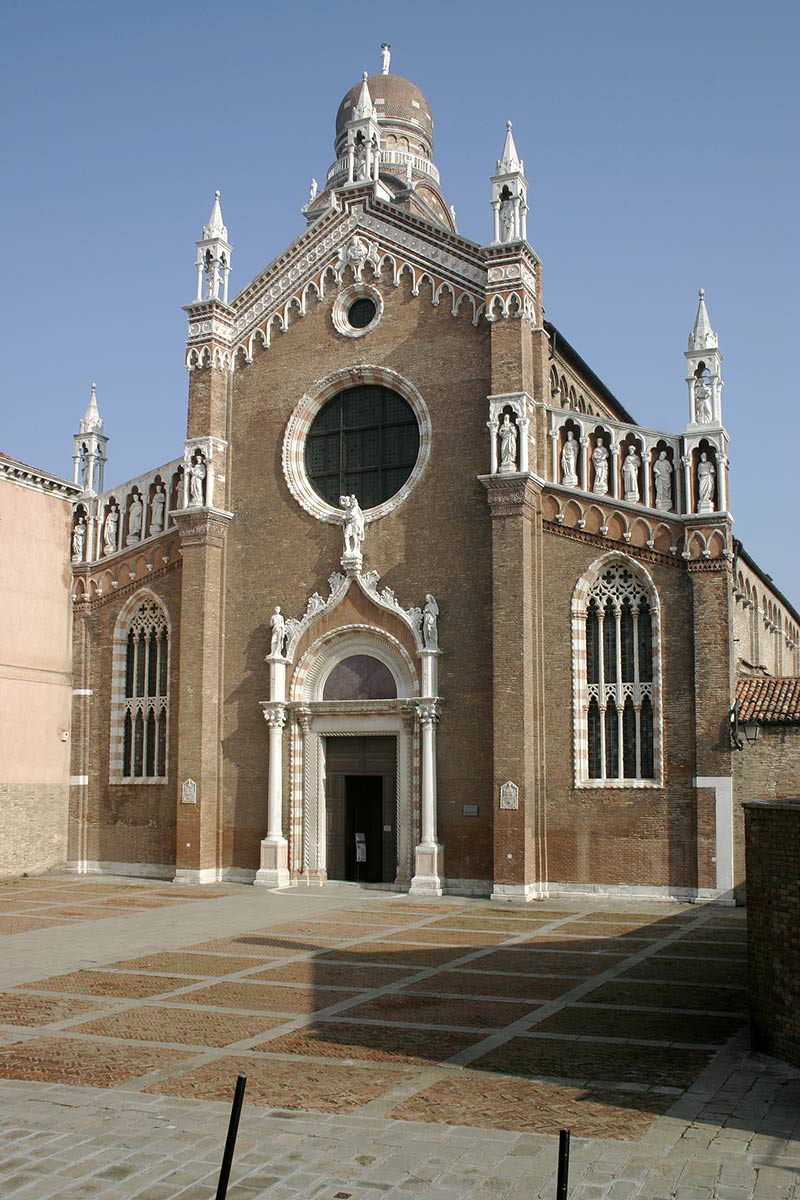
Madonna dell’Orto
The masegni are the classic gray stones that cover almost the entire Venetian public ground, from the first half of the 18th century. This paving is composed of slabs of trachyte, a volcanic stone extracted in the quarries of the Euganean Hills area, near Padua.

Masegni
Another type of street in Venice is the “Ruga” (from the French Rue): it is a street important for commercial business that have always been there since ancient times.
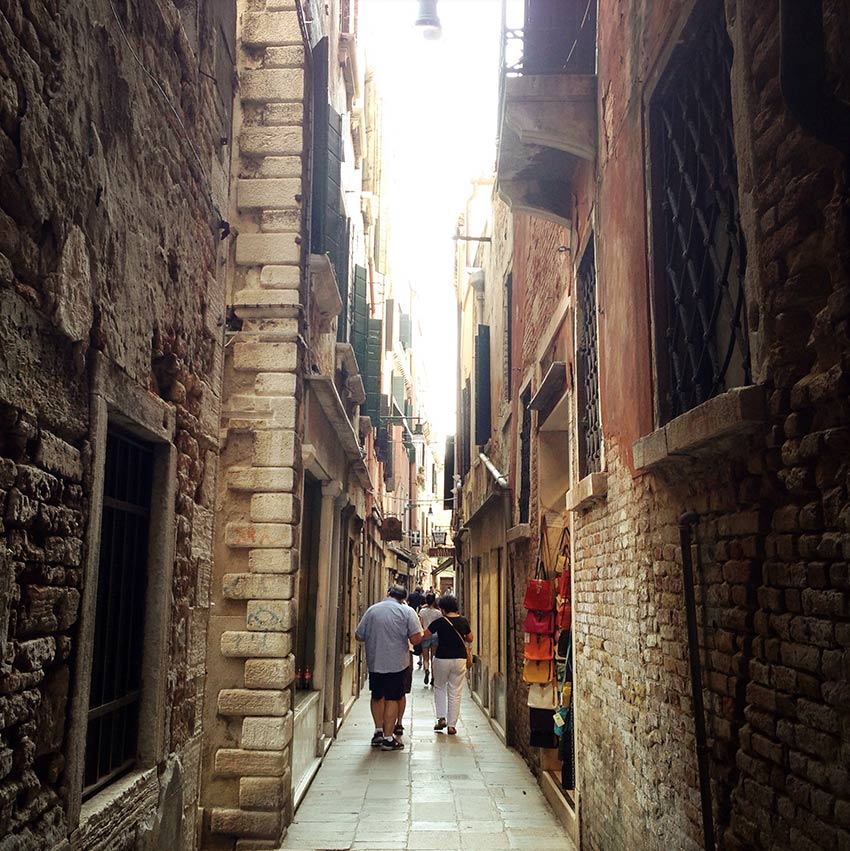
Ruga
Sometimes the need to create spaces on the streets led to bury the canals, turning them into “Rio Terà” (buried canal): the water of the canal often still flows under the road ground.
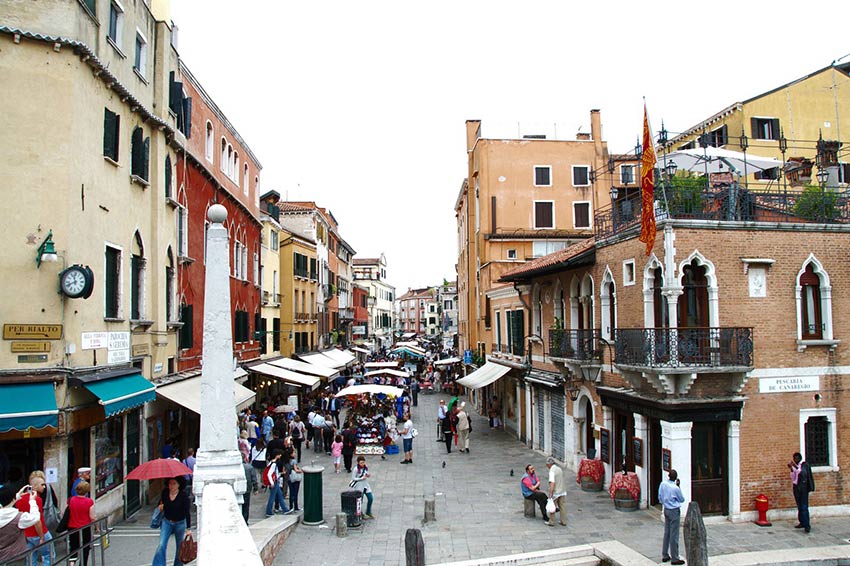
Rio Terà
The need to build houses forced the Venetians to widen the houses above the street: this is the case of “Sotoporteghi” (underpasses), a sort of “gallery” through the houses, often dark, where you can see the classic wooden beam ceiling that every Venetian house has.
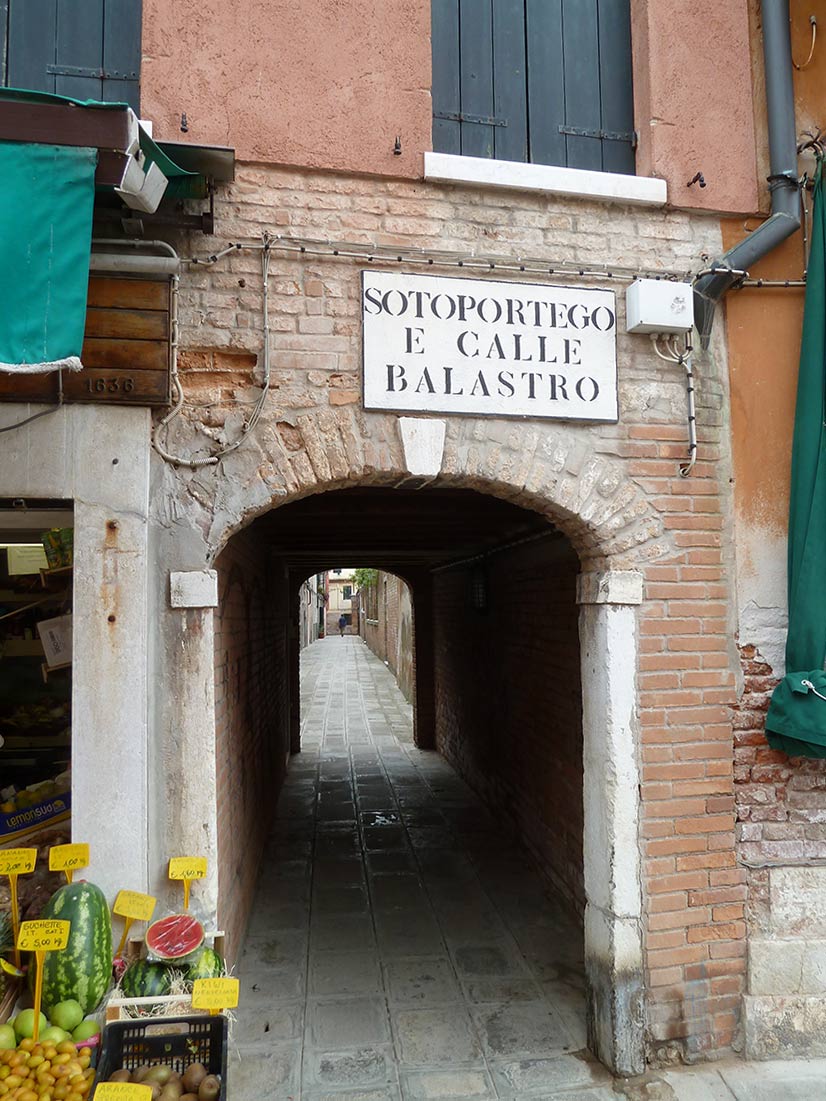
Sotoportego
Even the names of these different kind of “streets” are particular and different: they often refer to the ancient (or present) proximity to a convent or church or crafts that were practiced in a concentrated way, or they get their name from some famous person who used to live around there, but also by ordinary people who became famous for some reason.
And if all these names were not enough, keep in mind one thing: sometimes you can find the same name of a calle in different areas of the city, leading the distracted or superficial visitor to lose his way (or go crazy at all!).
Sources
https://it.wikipedia.org/wiki/Strada_Nova
https://it.wikipedia.org/wiki/Calle
The Venetian “Fondamenta”
Venice is a unique and special city, and the names of its “streets” are different from any other city in the world.
In Venice there is only one “Strada” (street), the “strada nova” and just one “Piazza” (square), Piazza San Marco.
The only road signs you can find walking around Venice are called “nizioleti” (Venetian term which means “sheets”).
The nizioleti are wall paintings painted on the plaster of the buildings and they show names, directions and street numbers.
The appearance of these atypical street signs is unmistakable: they appear as white squares (this is why there is the reference to the small sheet) bordered with black and they contain letters, numbers and arrows painted by hand in black thanks to the use of molds.
A recurring word you’ll find is Fondamenta or Fondamente.
“Fondamenta” means “foundation” in Italian, and it describes the walking bank along a canal. It was (and still is today) a popular area to load and unload boats, kind of like a dock.
The Fondamenta is the road that faces the water, just like the one I’m looking at now from my studio.
There may be different types of fondamenta, but they all will have some shore, the landing place for boats, with steps made of Istrian stone that descend into the canal and which are usually covered by slippery algae that capture unsuspecting tourists and sometimes take them to water.
Some fondamenta have wrought iron railings, interspersed with metal columns or Istrian stone, while others have masonry parapets covered with stone.
Some fondamenta have no parapets and have only a strip of Istrian stone along the edge that runs along the canal.
There are particularly large and long fondamenta, like the Zattere, which runs along the Giudecca Canal.
Other fondmaneta are not very large but they can be very long and you can find a lot of commercial activities, such as the Fondamenta della Misericordia which I wanted to portray in my engraving and which continues changing its name in Fondamenta dei Ormesini, where my studio is located.
The fondamenta has the particular charm to represent the union between land and water, in a city that lives in balance between these two elements and which can take the best from both, transforming them into a unique magic.
Sources
https://it.wikipedia.org/wiki/Fondamenta_(Venezia)
http://www.venezia.travel/blog-eventi/curiosita/le-fondamente-o-fondamenta-di-venezia-cosa-sono.html
http://www.myveniceapartment.com/it/venezia-calle-fondamenta-rio-e-salizada/
2 years and still going strong: happy birthday Plum Plum Creations!
SAVE THE DATE: APRIL 7th
It seems like only yesterday when I opened my studio, among problems and hitches… and now this is the second birthday we’re going to celebrate together!!
The second birthday of Plum Plum Creations, as usual, an opportunity to meet old and new friends at the studio in Fondamenta dei Ormesini n. 2681.
We will celebrate together according to tradition: drinking and having fun!
I wait for you all at the studio on April 7th, from 6pm
Arianna
PS: You can confirm your participation also on the “Event” on my Facebook page clicking here
The Bicentenary of Gallerie dell’Accademia – Canova, Hayez, Cicognara
The year just passed saw the celebration of the bicentennial of the Gallerie dell’Academia, one of the most important Venetian museums, where you can find the best collection of art from Venice and the whole Veneto, especially paintings from 14th to 17th century.
The Gallerie were born in 1817, a special moment in the artistic history of Venice: there was a cultural awakening of the city, together with a rediscovery of the ancient glory, arresting the decline followed by the fall of the Serenissima.
Among the major artists represented at the Accademia there are Tintoretto, Tiziano, Canaletto, Giorgione, Giovanni Bellini, Vittore Carpaccio and Veronese.
Besides the paintings, in the Gallerie you can also find sculptures and drawings, including the famous Vitruvian Man by Leonardo da Vinci, which is only exhibited on special occasions.
The exhibition, open until April 2nd 2018, celebrates the crucial years of the cultural revival which begun in 1815 with the return from Paris of the four horses of San Marco and the lion of the column on the pier of San Marco, symbolic works of Venice stolen in 1798 by Napoleon’s army, and ended with Canova’s death in 1822 in Venice.
The exhibition revolves around three key figures: Cicognara, Canova and Hayez.
Count Leopoldo Cicognara, (Ferrara 1767 – Venice 1834) intellectual, art historian and biographer, engaged in the preservation and enhancement of the past and at the same time in supporting contemporary art of those years.
He was president of the Academy of Fine Arts since 1808, where he had important results in the increase of the number of professors, in the establishment of awards for students and in the improvement of the courses of studies.
He was also the creator of the Galleria for the exhibition of Venetian paintings that now celebrates 200 years of life.
Antonio Canova, (Possagno 1757 – Venice 1822) famous sculptor, is considered the greatest exponent of European Neoclassicism in sculpture and he was in charge of the recovery of the works of art stolen by Napoleon during the occupation.
He was also highly appreciated during Romanticism, especially in Italy, where he was able to ignite national pride during the Risorgimento, to the point of being considered the tutelary genius of the nation.
Francesco Hayez, (Venice 1791 – Milan 1882) an innovative and multifaceted Venetian painter, one of the greatest exponent in Italy of the Romantic movement, left an indelible mark on the history of Italian art thanks to his works, many of which contain a hidden Risorgimento political message.
Cicognara, in an epistle sent to his friend Canova in 1812, wrote of his ambition to see Hayez becoming the interpreter of national inspirations, capable of giving new life to the great Italian painting.
The current exhibition is divided into ten thematic sections, among which stands out the meeting of the series of artifacts sent in 1818 to the court of Vienna for the wedding of Emperor Francis I, known as the “Homage of the Venetian Provinces”, which return to Venice for the first time in 200 years.
Inside the exhibition there are also paintings, sculptural groups, two ares and two large marble vases, a table made of bronze and wood with the top covered with precious Murano glass and precious bindings representing the highest artistic production of the Venetian Neoclassicism.
The visiting path also features the Musa Polimnia by Canova, completed in 1816, which has a troubled story which is told for the first time on this occasion.
In 1898, after the death of Empress Elisabeth of Austria, the sculpture passes into the collection of her niece, Archduchess Elisabeth Mary of Austria, daughter of Rudolf of Hapsburg-Lorraine.
In 1942, after two years of negotiations and the payment of an exorbitant sum, the Musa Polimnia became property of Adolf Hitler, who wanted it for his Fuhrermuseum in Linz.
Found by the Americans in 1942 in a castle, it was moved to Munich, Germany.
Only in 1964 the statue returned to Hofburg, in the same rooms that had hosted it until 1929, and then moved for a few months to the Gallerie dell’Accademia in Venice.
Sources:
http://www.veneziatoday.it/eventi/canova-hayez-cicognara-gallerie-accademia-venezia.html
https://it.wikipedia.org/wiki/Gallerie_dell%27Accademia
http://www.gallerieaccademia.it/canova-hayez-cicognara-lultima-gloria-di-venezia-0
http://www.mostrabicentenariogallerie.it/
https://it.wikipedia.org/wiki/Antonio_Canova
https://it.wikipedia.org/wiki/Leopoldo_Cicognara
https://it.wikipedia.org/wiki/Francesco_Hayez
http://www.exibart.com/notizia.asp?IDNotizia=54874&IDCategoria=264


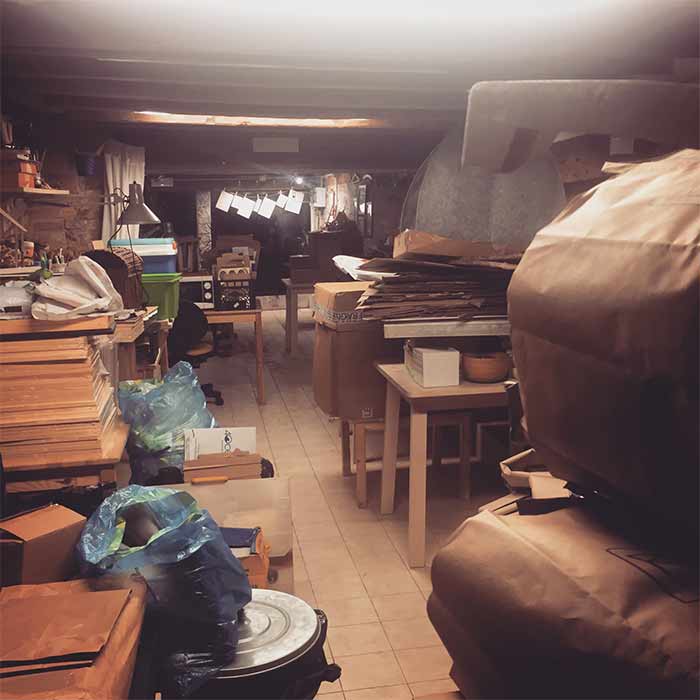
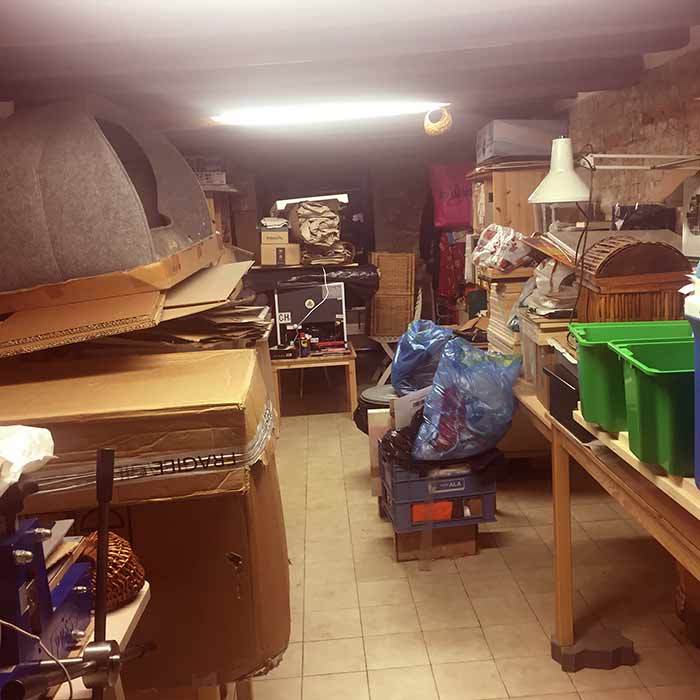











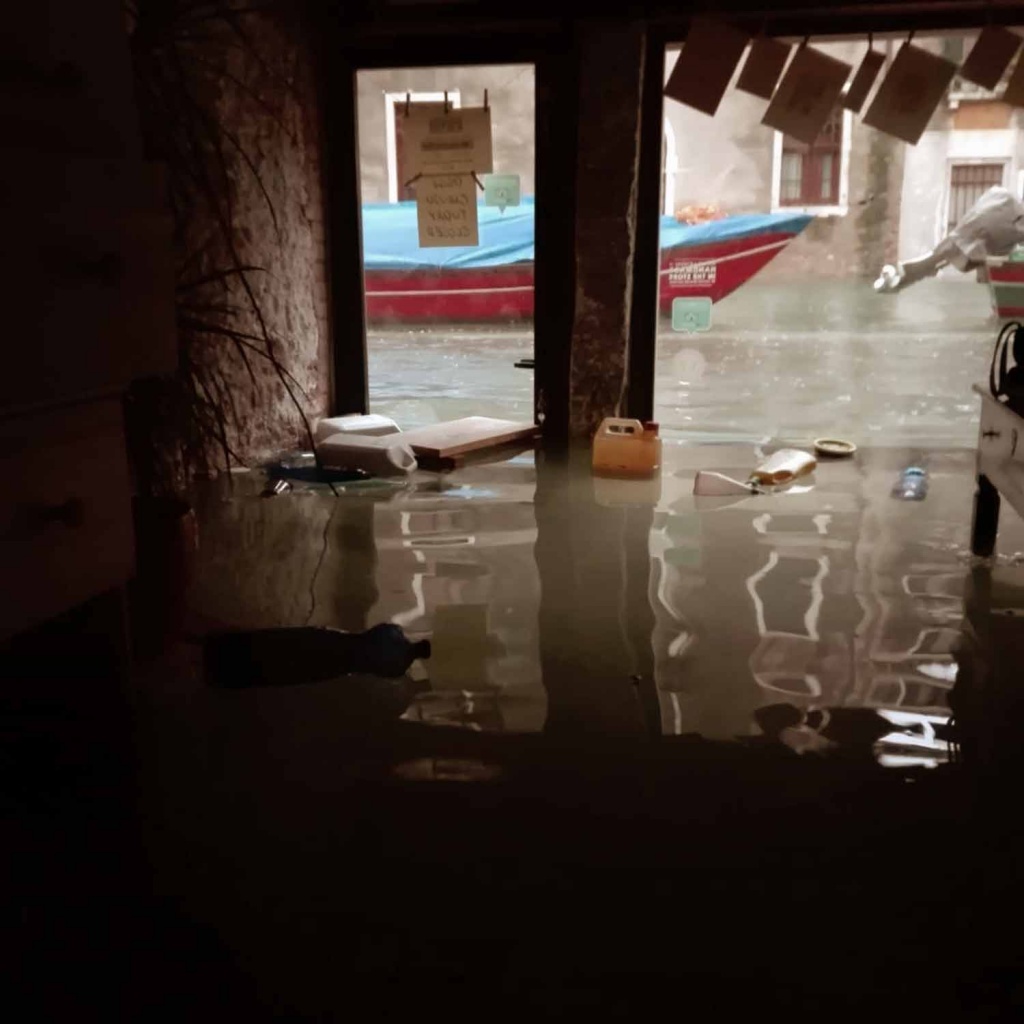














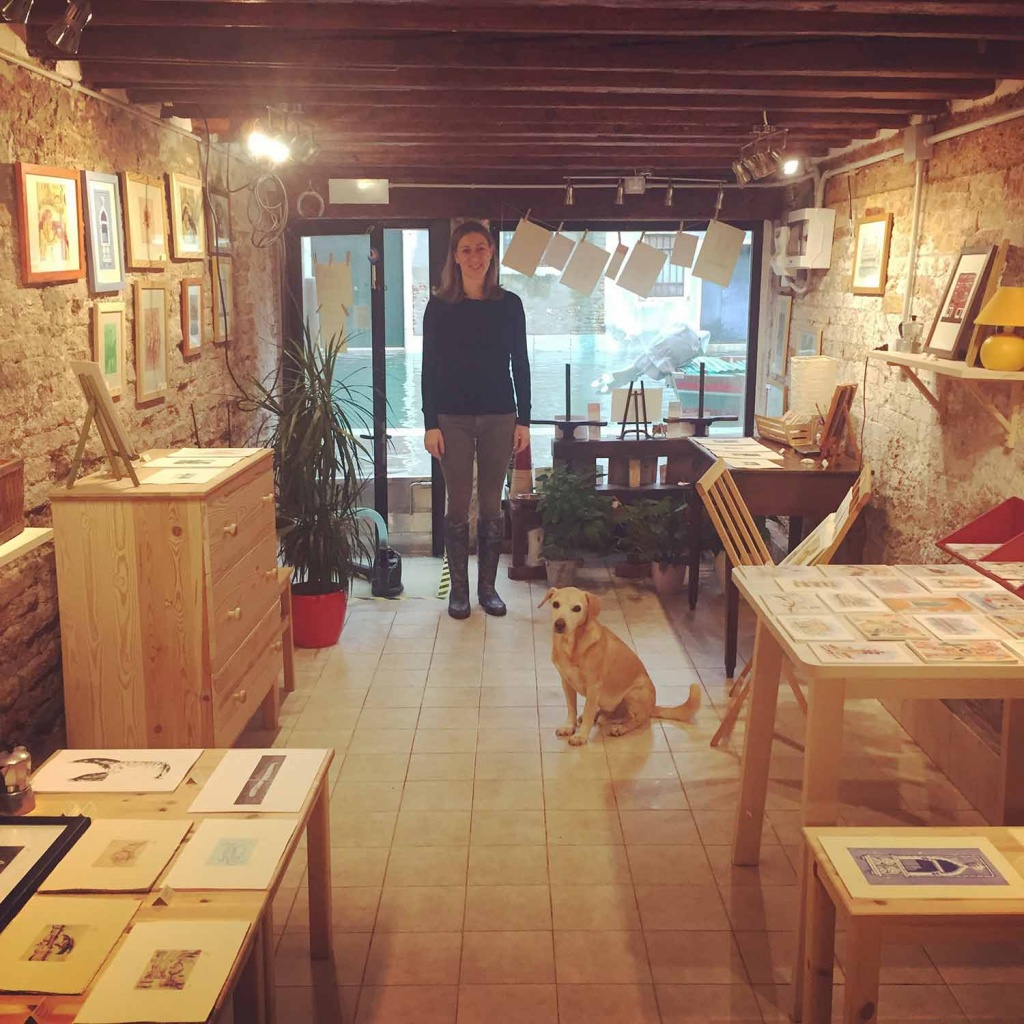





















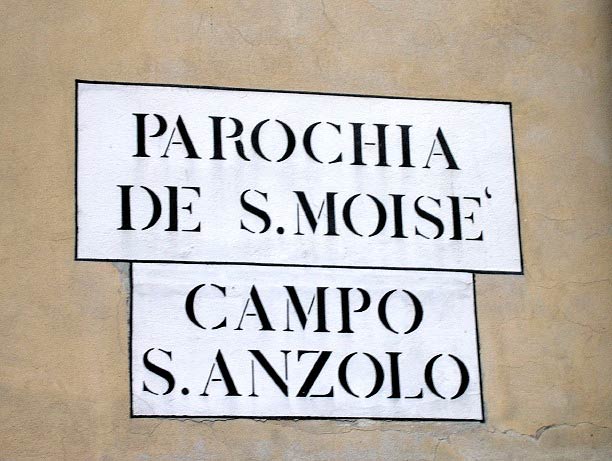





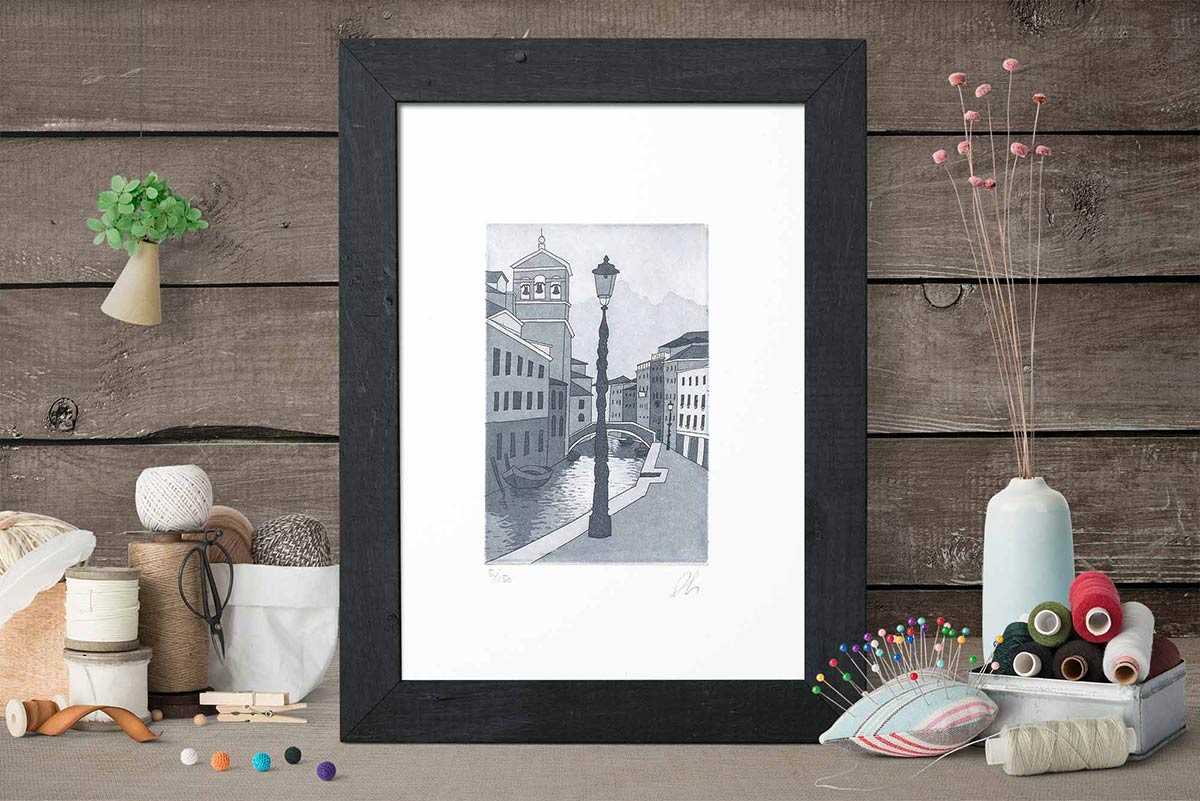
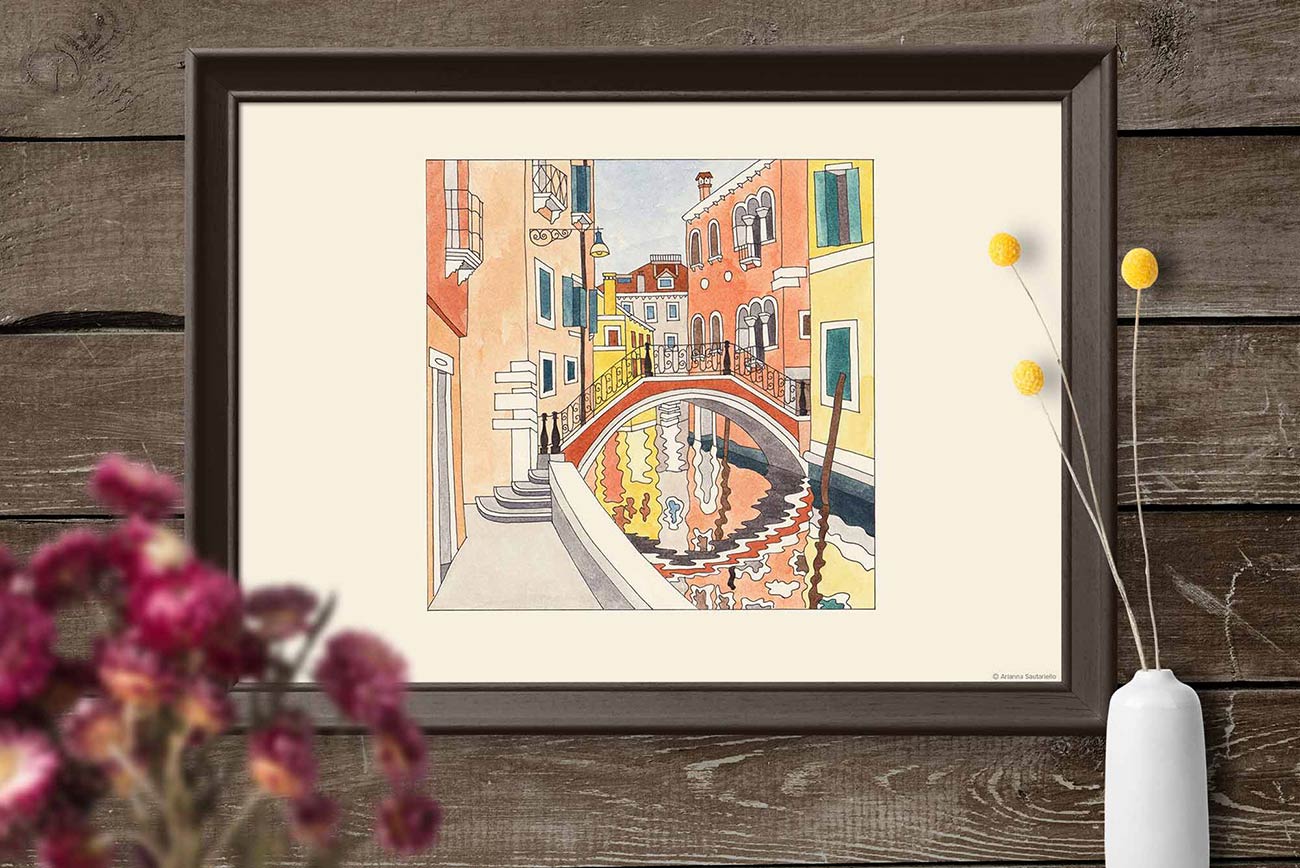
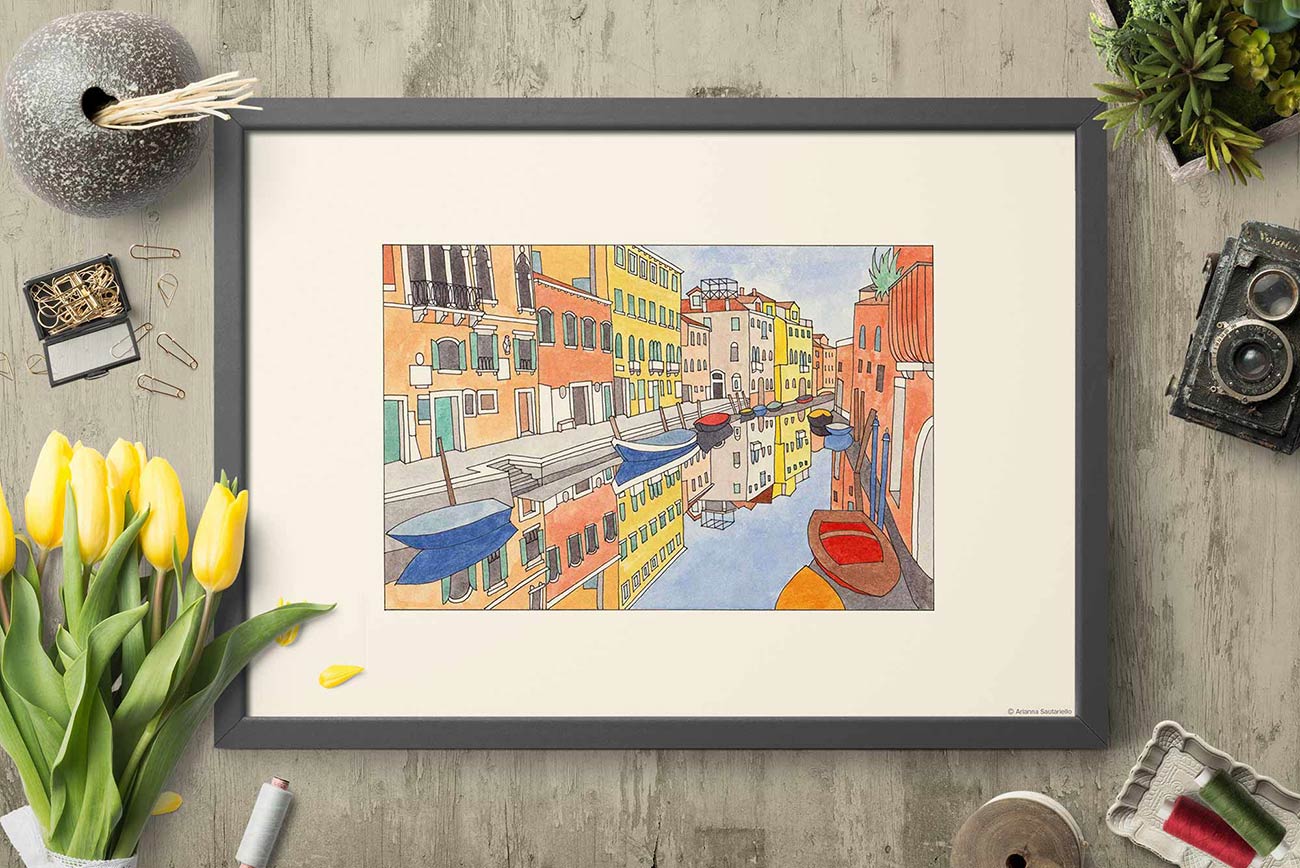

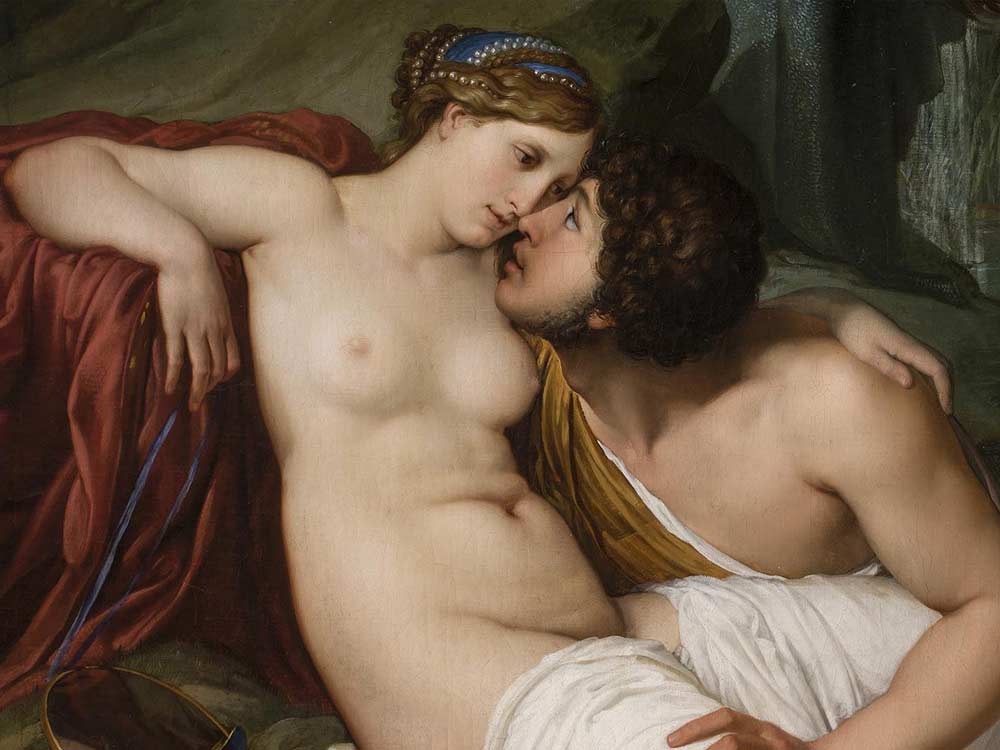


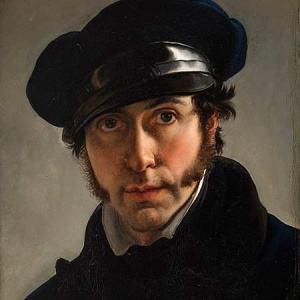
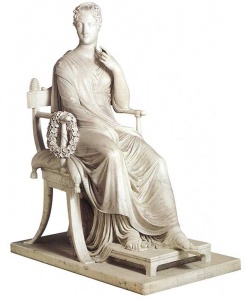
 Venice place names: Campi, Campielli, Corti
Venice place names: Campi, Campielli, Corti  Venice place names: Calle, Calle Larga, Salizada, Rio terà, Ramo, Sotoportego
Venice place names: Calle, Calle Larga, Salizada, Rio terà, Ramo, Sotoportego  The Venetian “Fondamenta”
The Venetian “Fondamenta”  2 years and still going strong: happy birthday Plum Plum Creations!
2 years and still going strong: happy birthday Plum Plum Creations!  The Bicentenary of Gallerie dell’Accademia – Canova, Hayez, Cicognara
The Bicentenary of Gallerie dell’Accademia – Canova, Hayez, Cicognara